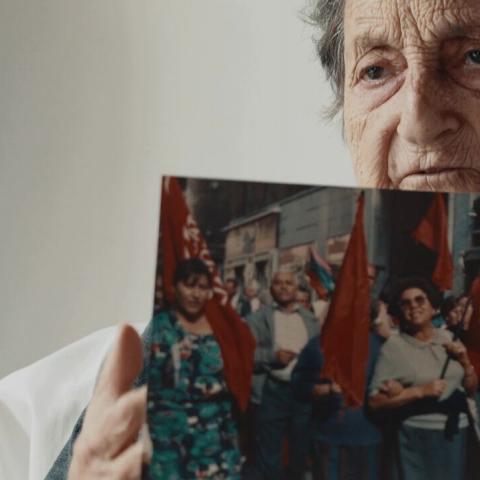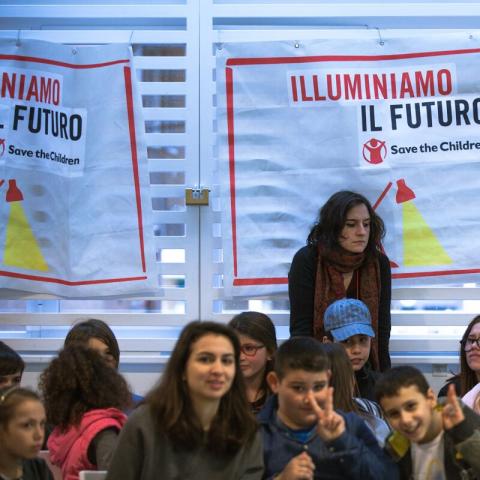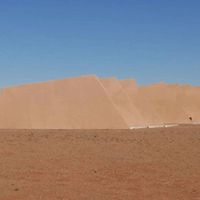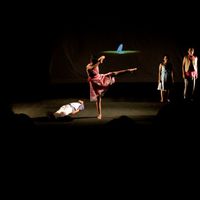Manifesta 12: looking at the world through the city of Palermo, Italy

Manifesta 12, the new iteration of the European Nomadic Biennial, is taking place in Palermo, Sicily. With the title “The Planetary Garden: Cultivating Coexistence” (16 June to 4 November 2018, Palermo, Italy) the international event gives us a new and fresh perspective on issues of migration and cultures.

In today’s international discourse on migration and the new geography of culture, Palermo employs contemporary art to bring the Mediterranean to Europe. This is quite new, considering that only a few years ago no one would have put their bets on Sicily for a contemporary art biennale. However this year Manifesta, the European Nomadic Biennial, has chosen Palermo for its 12th edition, recognizing among other things the importance of the city in the Mediterranean region.
Manifesta is an international event which originated in the early 90’s in response to the political, economic and social changes following the end of the Cold War and the subsequent steps towards European integration. Today Manifesta has evolved into a travelling platform focused on the dialogue between art and society in Europe.
We discussed the themes of Manifesta 12 and the impact of the Biennial with its founder Hedwig Fijen and this year’s event creative mediator Ippolito Pestellini Lapararelli.
Manifesta was founded in the early 90’s and has slowly evolved from a simple art exhibition into an inter-disciplinary platform for social change. What instruments did you introduce to encourage this shape-shift?
Hedwig Fijen (HF): Yes, Manifesta originated in the 1990s after the fall of the Berlin Wall, with the aspiration to balance the gaps between East and West. In the first two decades we were focused on the notion of Europe in a post-Communist timeframe as the main contextual element. Manifesta is not an aesthetic series of exhibitions; because of its itinerant character, it’s devoted to select host cities in a much complex geopolitical context. With M12 we have also worked on the idea of the biennial as a research platform.
Ippolito Pestellini Lapararelli (IPL): M12 sets process in motion involving communities and cultural practitioners and tries to be a catalyzer of ideas for the future.
Has this evolution of Manifesta contributed to transforming the notion of contemporary art or was it more the evolving notion of contemporary art to ask Manifesta to transform?

HF: Since we don’t want to maintain a specific contemporary art event only, every 5 years or so I revisit my strategy, asking: What are the key geopolitical issues concerning the citizens of Europe? It could be something like a utopian feeling after the fall of the Berlin Wall, or the scenario today.
The most urgent topics that everyone in Europe is dealing with at this very moment are the integration, and dis-integration of Europe and its citizens; climate change and how we can survive on our planet in a “human way”. We look at how these issues affect our cities specifically, since Manifesta doesn’t take place in institutions but rather in an urban context.
The title of this edition of Manifesta is “The Planetary Garden: Cultivating Coexistence.” Why did you pick this image of the garden?
IPL: The idea of Palermo as a node in a geography of movements triggered the intention to explore different forms of coexistence in the age of planetary flows through the specific lens of Palermo, and it led to the conceptualisation of The planetary garden: Cultivating Coexistence.
The 3 main sections of the Biennial are intrinsically related to this perspective: Garden Flows looks at gardens, at our coexistence with other species, with toxicity, with artificial and new forms of nature, it looks at the simultaneous impact of the diaspora of seeds and men under the impulse of climate change, etc.; Out of control room investigates global flows (capital, people, data, goods) as the unmanageable – out of control – by-product of globalization, in which politics today are embedded and decided. It asks how to render those flows visible and debatable, what agency is left to civic society to access them and how to coexist with the post-human, with technology and algorithmic intelligence. City on Stage looks more specifically at the ephemeral traditions of Palermo’s urban life - such as story-telling or religious processions - and how they have been affected or reinvented by recent migrations and multicultural inputs.
The biennial develops across 22 non-institutional locations – abandoned palazzos, remote modern ruins, gardens, churches, inaccessible fascist-era buildings, social housing compounds, confiscated properties, and is based on the intention to use M12 as device to make accessible certain areas of Palermo that normally are not.
The artworks aim to interact not only with the city but also to its inhabitants. Can you give us some examples of this?
IPL: Out of this initial engagement Manifesta 12 has partnered with Palermo and it is inhabiting Palermo. The city becomes the project of this edition of Manifesta. Palermo is an ideal place to investigate the current moment. The challenges and the transformations that the city is experiencing – the simultaneous impact of migrations, climate change, mass tourism, illegal trafficking, etc. – makes it an incubator of global issues and a testing ground for the present and future of the Mediterranean region and Europe at large.
There is a particular point of view that emerges from Palermo Atlas which reveals Palermo not any longer as a city, but as a node in an expanded geography of flows – of people, capital, goods, data, seeds, germs – that today extend far beyond the Mediterranean and affect its dynamics.

Have all the artworks been commissioned for Manifesta and did the artists visit the sites before creating their work? How was the process of working with them?
IPl: Manifesta is part of a political vision of the city of Palermo based on culture, multiculturalism and integration. It’s a new narrative based on a shift in politics and culture, away from the heavy heritage of crime and mafia, and based on the largest possible participation of its citizens. We have creates 30 new site specific commissions in Palermo. Every single project was done in collaboration with local institutions, civic associations, experts, private citizens, recently arrived migrants, activists etc.
The process of making this bienniale – from Palermo Atlas to the implementation of each work – has been developed as a partnership between the city and Manifesta. By creating this network of collaborations Manifesta sets the basis of its long term legacy and communicates with the locals.
The interventions of Rotor and Gilles Clement for example, involve hundreds of people and being prototypes, they can be scalable and replicable. They belong to a different time frame than the one of the biennial: they have started long before the opening and they will outlive Manifesta. Others develop research methodologies and leave on the ground installations that are in between open air labs and theatrical interventions for everyone to experience. This is for example the case of the work by the spatial practitioners duo Cooking Sections on dry irrigation techniques, which was developed with the local faculty of Agronomy, as a response to climate instability and the increasing frequency of droughts.
Palermo’s major Leoluca Orlando is on a mission to transform the city through culture, bringing extra government funding for cultural activities and tourism. Can you tell us about the institutional support you received?
HF: I have been introduced to Leoluca Orlando, the mayor of Palermo, 15 years ago now, and 6 years ago he invited me to spend 3 weeks in the city. I was extremely impressed by the transitions—trasformazione— taking place, from a “Mafia” capital to a capital of Culture. We see Palermo as a city that incorporates two thousand, or maybe even three thousand, years of embedded, condensed history of Europe, Northern Africa, and the Middle East. It has a central position between 3 continents, and it was one of the first European cities to directly confront other culture’s on their island.
What I think is so interesting for local and international audiences, is that there is no direct, specific xenophobia here as there is in many other European cities. This is partly because of the thousands of years of living together, coexistence, that is part of Sicily. But also because of the radical policies implemented by Mayor Orlando. This is a bit of what it means to look at the world through Palermo’s eyes.
Links:
Naima Morelli is a journalist and arts writer researching emerging art systems. She is specialized in the Asia-Pacific region, focusing on Singaporean, Indonesian and Australian art and she is currently researching Cambodian contemporary art. Currently based in Rome and constantly on the go, she has the mission of bridging Asia and Europe through art, culture and words. Her pieces regularly appear on CoBo Social, Art Republik, Culture360, Art a Part of Culture and Middle East Monitor. In the past she has written for Art Monthly Australia, ArtsHub, NY Arts, Artribune, I-Magazine Bali, The Times of Malta among others, and she has contributed texts to a number of publications and exhibitions catalogs. She is also the author of the book “Arte Contemporanea in Indonesia”, a narrative essay published in Italy. The book shows how contemporary art produced in Indonesia can’t just be labelled as “Indonesian”, while tracking the context’s influences on the art itself.
Similar content
from - to
16 Jun 2018 - 04 Nov 2018
from - to
08 Sep 2024 - 24 Nov 2024
posted on
28 Aug 2020
deadline
17 Jul 2020
from - to
28 Jun 2014 - 31 Oct 2014






